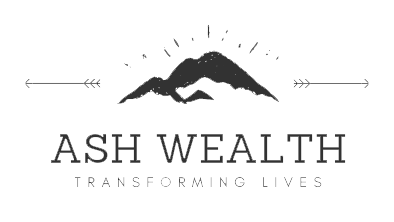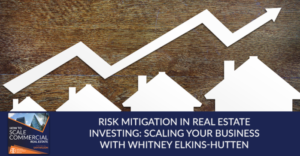With the plethora of information on real estate investing available online, every day budding investors ask the same question: “How do I get started as a real estate investor?”
It isn’t as easy as you might think to pin down a starting point. For many first time investors, real estate is quite possibly their first foray into an investment where they control not just the asset but the business, as well—where they are responsible for its success or failure.
It’s a lot to handle as a newbie.
So, I’m going to take a wild guess. Most new investors don’t really want to be in the business of real estate, but actually just want what real estate can give them.
Take me, for example. Most people would say I’m the real estate investment business, or real estate consulting business, or even both. But I’m not. My real business is leveraging my resources to give me a choice in how I spend my time, and helping others do the same.
That’s the guiding principle for my investment strategy. Real estate is just the vehicle that helps me get there. (Don’t get it twisted though, because I love real estate.)
So, tell me. What business do you really want to be in?
The Power of Business Alignment
Many investors started investing because a friend or family member owned property, maybe they were flipping or renting. Regardless, the extra cash flow and/or equity that they were creating with real estate sounded cool, so they copied that friend or family member and dove in headfirst.
This is a common rookie mistake: jumping into real estate without having a plan for the type of business you actually want to build.
What can you do about that? Here are four simple ways to help you sidestep this common rookie trap and lay the important groundwork before you build your business plan.
- Know Your ‘Why’
Clarity is power, especially when you need to determine why you’re getting into real estate. However, most people ask themselves “why” only once.
If you only ask this powerful question once, you will most likely jump into real estate investing from a place of scarcity. Maybe you want to pay down debt, cover expenses, or replace income to quit your job. If you are only thinking about how quickly you can rack up cash, you might pick an investing strategy that isn’t fully aligned with your interests or how you want to spend your time in the long run.
However, when you ask “why” at least five to seven times, 99% of the people I work with want an abundance of their most valuable non-renewable resource: time. So, let’s start with the end in mind.
Ask yourself why you want to invest in real estate. When you answer this question, ask yourself, “Why do you want that?” Do this at least five times (it’s hard!).
When you dig deep like this, you have greater clarity on what investing in real estate will give you in the end (the abundance part). It’s this last statement that you should build your business around. For example:
- Why do you want to invest in real estate? (e.g., To create cash flow.)
- Why do you want to create cash flow? (e.g., So I can pay bills and start saving more.)
- Why do you want to save more? (e.g., So I can replace my income.)
- Why do you want to replace your income? (e.g., So I can quit my job and build a location-independent business.)
- Why do you want to build a location-independent business? (e.g., So I can travel the world with my family and meet new people.)
- Know Your Goals
Now that you have dug into your deeper-level “why,” the next step is knowing what it will take from a monetary standpoint to get to that.
Is it:
- Enough cash flow to cover a certain bill each month?
- Enough cash flow to cover expenses?
- Enough cash flow to replace your income?
- Enough cash flow to exceed expenses and live abundantly?
- Enough cash flow to never have to worry about money ever again?
See how this is a continuum?
When evaluating the end result you need from real estate to get you to your “why,” I encourage you to break up the journey into at least two milestones:
- How much cash flow do you need to cover your monthly fixed expenses?
- If your income exceeds your expenses, how much cash flow do you need to replace your income?
You may want to insert additional milestones as you see fit. Just remember, all milestones should line up on your journey to your “why.” Your goals will change over time, even how to get to your goals will change over time, but your “why” will rarely change.
- Identify Your First Investment Strategy
Now that you have done the powerful work of determining the actual “why” of your business, it’s time to pick your first investment strategy. Choose one that aligns with your interests and be honest with yourself about how much time you have to work on your business. To figure this out, I’ll walk you through an exercise.
Here is a list of all the different ways you can invest in real estate. Don’t worry so much about how you will execute the strategy, but think about what type of investing interests you. Then, pick from one to three options on this list:
- Fix/flip
- House hacking
- Single-family homes
- BRRRR (Buy, Rehab, Rent, Refinance, Repeat)
- Small multifamilies (2-4 units)
- Larger multifamilies (5-50 units)
- Commercial multifamilies (50+ units)
- Mobile home parks
- Self-storage
- Residential assisted living
- Land
- Development deals
- Short-term rentals
- Hotels
- RV parks
- Private lending
- Crowdfunding
Now that you have a shortlist of real estate interests, the next step is to figure out how involved you want to be in your investment. Be honest with yourself! Here are some ways to think about your time:
- Active: Hands-on day to day (like another job).
- One-Time Active: You do all of the upfront work, then it’s relatively minimal time to manage.
- Semi-Passive: You work with a team to put the deal together, then outsource to a property manager/contractor that you manage.
- Passive: You do due diligence on an operator, their markets, and their deals and invest in them while you go sip margs on the beach.
- Pick a Strategy
Naturally, after all of this work, you still might not be exactly clear on which real estate strategy you should start with or exactly how you want to spend your time. There are a few scenarios that may apply to you.
1. You have a few real estate investment interests and more than one thing piques your interest. If this is the case, ask yourself which interest you are going to execute on first.
- A year ago, I had the pleasure of watching Brandon Turner present. In his presentation, he made a Jenga analogy. What he sees most new investors do with the limited blocks they have (the blocks being capital and time) is build multiple Jenga towers—none of which stand that high. You can’t get nearly as far as you would if you concentrated all your blocks on building one tower really high (which is the entire point of the game!).
2. You have a great idea of how you want to spend your time, but you don’t have a clear path to getting started (perhaps due to a lack of money). That is understood and even expected. Despite that obstacle, you will need a clear plan for how to be more active in your business and capture equity so that you can build up capital reserves, all while keeping your end “why” in mind.
- Once you can get the wheel spinning, you can shift your focus to more passive forms of investing. Believe it or not, once I could start dumping more time and funds into my truly passive investments, my velocity of money (and time) exploded!
- If you are low on either time or money, all is not lost! You just have to get more creative, like finding a partner to help you leverage the resources you currently don’t have. There are plenty of investors who have money and no time—or time and no money. The one thing you must have to tap into these other resources is knowledge.
The Bottom Line
The next steps are crafting your business plan based on the vision and alignment you just created, and then taking massive action to actualize that vision.
But don’t rush this alignment step!
When you sit with the above questions and do the hard inner work, you will be much farther ahead than most new investors, who jump in with setting goals and looking at deals (which is still part of the business plan, just the wrong place to start).
When you do the alignment work, you will build your business so much faster and have a smoother path. Most importantly, you will avoid the pitfall of thinking you are in the real estate business.
Because you aren’t. You are in a much deeper business of getting back your time, and real estate is the vehicle that will get you there.
Why did you get started in real estate investing? How has that impacted your business decisions?
Tell me about your why!
Click here to view the original post.
Remember, you are just one deal away…
Whitney





